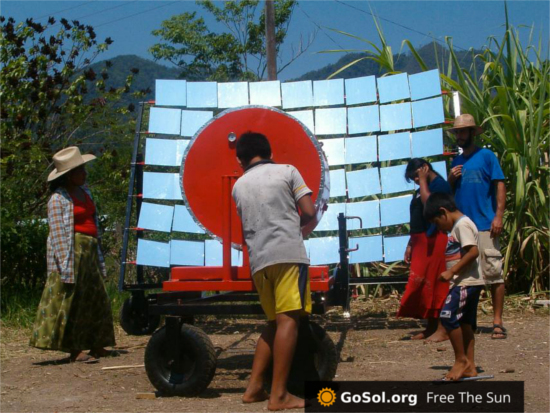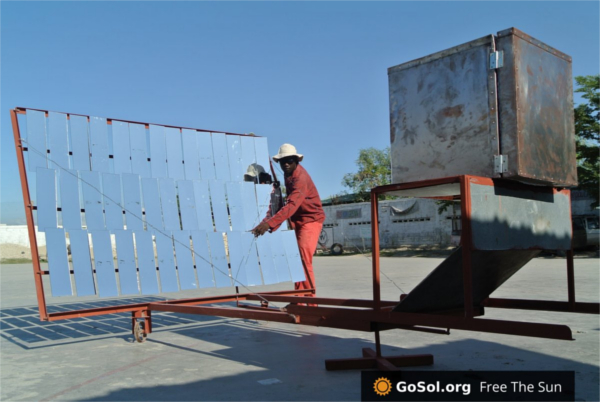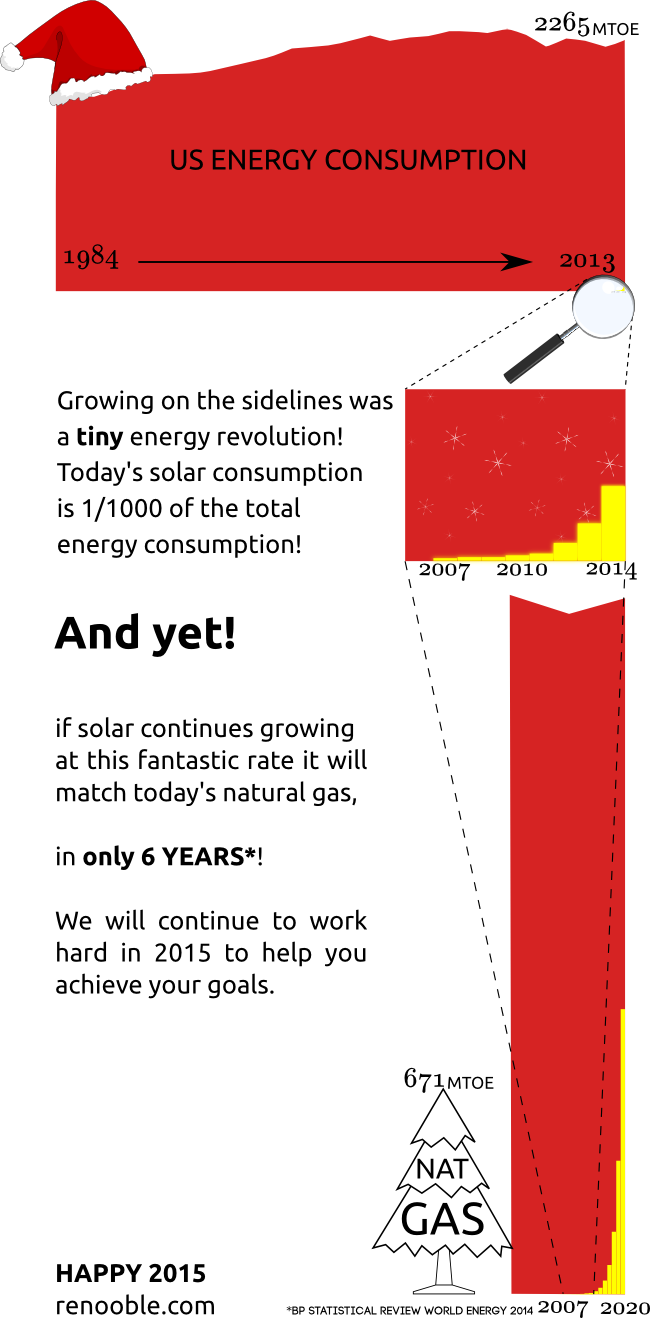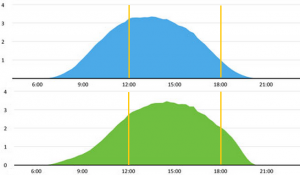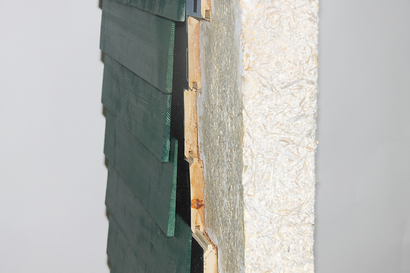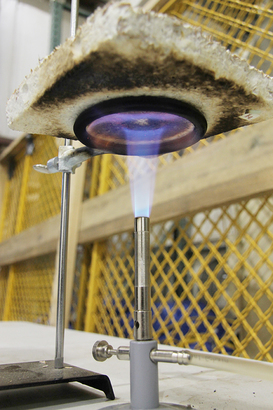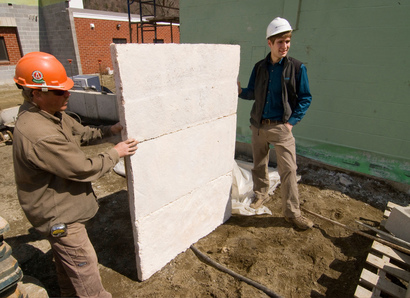A few months ago we blogged about the rapid decline of solar panel prices in the last 35 years. Recently, a new world record has been achieved in solar cells efficiency, so we wanted to share the good news with you. The current record is 44,7%. This means that almost half of the light hitting the panel can be turned into electricity. It was achieved by the German Fraunhofer institute just a couple of weeks ago. Commercially available cells can’t reach half of this value, but you should consider that this record is only possible under perfect research conditions – at least nowadays. We’ll see more on this point later in this article. This chart shows the continuous improvement of the efficiency over the last 35 years:
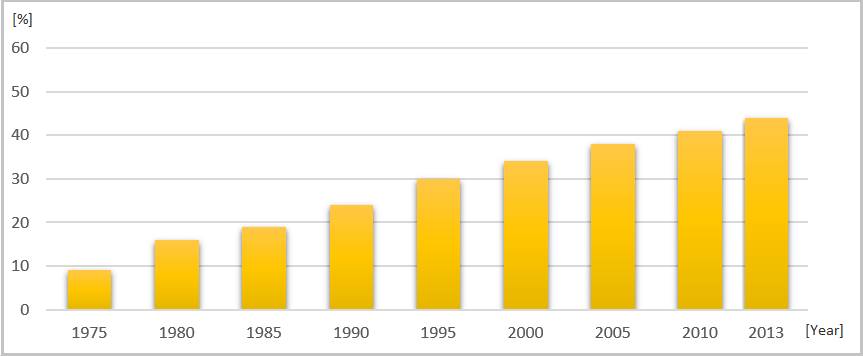
Solar cell efficiency in % from 1975 to 2013
You can clearly see a steady development, starting below 10% in the 70s and moving beyond 30% in the last 10 years. If technology continues to advance at the same rate we should reach the magic level of 50% in 2020. However, it’s not that simple.
You have to take a closer look and distinguish between the technologies. Four main ones stand out: Thin film, crystalline Si cells, single-junction GsAs and multijunction cells. There are some more, e.g. organic cells, but the four above play the biggest role.
Thin film panels were expected to become very cost-efficient and flexible. But this hasn’t quite happened yet, so the technology hasn’t spread very far. In thin film, the solar cells are embedded in two panes of glass. There is a huge variety of semiconductors that can be used, but often CdTe (Cadmium Telluride) and CIGS (Copper Indium Gallium Selenide). See our solar PV ABC to read more about it. CIGS has the highest efficiency within thin film (~20%) but it is also the most expensive. For this reason, CdTe is most frequently used.
Crystalline Si cells Crystalline silicon cells are made either by slicing wafers from one single crystal ingot (monocrystalline) or by sawing bars of silicon into wafers (polycrystalline) [read more on Making electricity out of sand]. The cells are connected and laminated under glass, to make them weather resistant. Furthermore, they are enhanced with anti-reflective coatings to absorb most of the sunlight. The highest possible efficiency for single-junction Si cells is 33,7%, but the current record stands at 25%.
Single-junction GsAs. As said before, single junction solar cell efficiency is limited to 33,7%. This is the case because some materials can only absorb one light color and the rest gets reflected or passes through. Another way to say it is that each junction is tuned to a specific light wavelength. To go beyond this limitation, one can layer different materials, and as light passes through, each color (or wavelenght) gets absorbed in a different layer. These are the so-called:
Multijunction cells With these, you can improve efficiency theoretically up to 87%. However, light has to be concentrated to get the most of it. Using lenses or dishes, the sunlight falling onto a large surface gets concentrated to a smaller cell. Using this combination of technologies and materials one can increase the efficiency but price and complexity also grow dramatically.

Best research cell effienciencies [source: NREL]
If you are interested in the details and want to see which technology enabled what record, you can find a more detailed chart from NREL, the
National Renewable Energy Laboratory. So how was the recent 44,7% record achieved? The Fraunhofer institute used a four-junction cell to beat previous efficiencies that typically used three-junctions. The combination of cells enabled the absorption of different wavelengths ranging from ultraviolet through to infra-red light. Furthermore, they used concentrating technology, which made it way more efficient than conventional PV technology. The question of whether 50% efficiency can be achieved is probably just a matter of time.
However, no matter what efficiency is reached, it won’t be used on your roof for a long while. The raw materials are too expensive, and there is no industrial process to develop them at scale. Buying a larger number of less-efficient panels usually works best for most home applications. Ultra efficient (and expensive) panels usually make sense when weight and space are very limited (like on a satellite).
Also keep in mind that solar cell efficiency is not the same as solar panel efficiency. Your solar panel will reduce the cells’ efficiency due to losses in conductors, electrical contacts and imperfections.
Still have questions? Fire away and our experts will get back to you soon!
References:
- Fraunhofer press release: World record solar cell with 44,7% efficiency
- NREL National Center for Photovoltaics
- Arturo Morales-Acevedo: Forecasting the Development of Different Solar Cell Technologies
